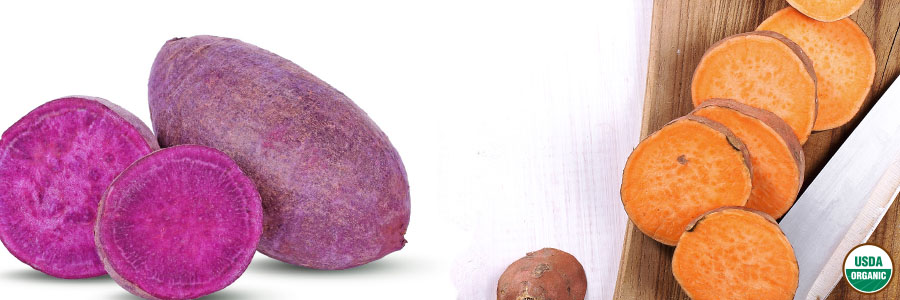


Sign-up for {N}power to get exclusive discounts, newsletters, members-only features, and more!
 Denver - Design District - Alameda and Broadway
Denver - Design District - Alameda and Broadway
368 S Broadway
Denver, CO 80209
United States
 Preferred Store:
Select a Store
Preferred Store:
Select a Store

For this month of love and sweet things, we’re romancing a root veggie that may possess a humble exterior, but don’t let it fool you—once you unlock its delicious potential it will bring the fun to every breakfast, lunch, and dinner date. The sweetest of potatoes, and often mistaken for a yam, we are talking about the sweet potato!

When it comes to quality relationships with food—go for the (naturally) colorful types because their vibrancy means they have lots of health-supporting phytonutrients.1 Sweet potatoes are one of the best food sources of beta carotene, a powerful antioxidant that the body can convert to vitamin A.2 In fact, they’ve been the subject of multiple studies for their ability to counteract vitamin A deficiency in developing countries, especially in children.3 4 5
Transparency is key to happy partnerships, so make sure your favorite tubers aren’t harboring dirty secrets—like synthetic pesticide residues. Consider dicloran, a fungicide that is a possible carcinogen,6 has the potential to leach into groundwater, and is toxic to aquatic life, birds, honeybees, and earthworms.7 Not something you want to introduce to the family, right? According to tests from the USDA Pesticide Data Program, 47 percent of conventional sweet potatoes had dicloran residue, while none of the organic samples did.8
The love language of organic agriculture begins with healthy soil. Organic farming practices nurture and regenerate the soil, differing from the conventional agriculture approach of high input for maximum output. The deterioration of soil releases carbon and nitrogen into the earth’s atmosphere in the form of greenhouse gases, but fertile soil, rich in organic matter, functions as a carbon sink, effectively capturing and storing carbon.9 10 A recent study from Northeastern University concluded that organically farmed soil has a 26 percent greater potential for long-term carbon storage than conventional. Comparing samples from across the U.S., the researchers zeroed in on humic substances, the heartbeat of fertile soil. They found that humic acid, which plays a pivotal role in carbon sequestration, was 44 percent higher in organic soil.11 12 So when you choose this earthy root, consider, as all successful relationships do, its long-term impact. Choose organic.
Have you ever mistaken a Garnet or a Jewel for a yam? They’re sweet potatoes, although we often call them yams. The real yam isn’t common in the US, preferring more tropical climates instead. So take your love of these delicious roots to the commitment stage and call them by their actual name.



Sign-up for {N}power to get exclusive discounts, newsletters, members-only features, and more!
